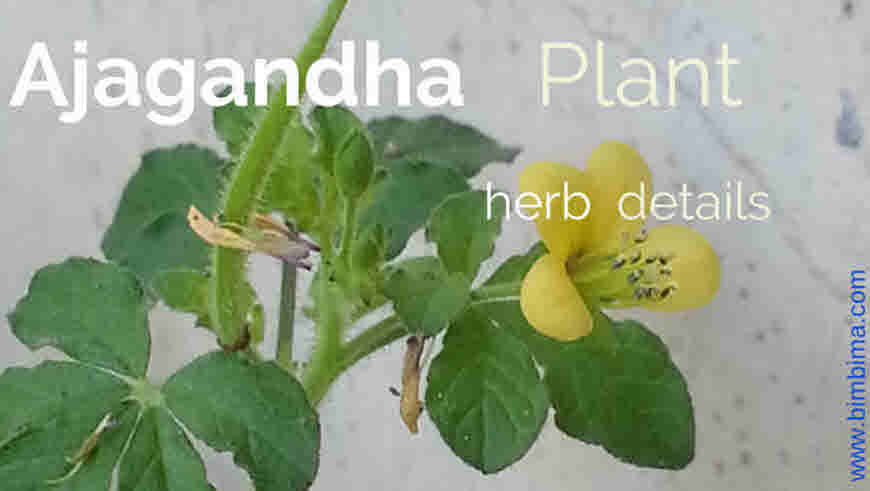Ajagandha is a medicinal plant that grows as weed throughout warmer part of India. Ayurvedic Materia Medica describes this plant as light (attribute); appetizer, cardiac Tonic, Vata and Kapha hara. Some of the other common names of this plant are Tilaparni, Pashugandha, Ugragandha, and Thaivelai, Nalvelai (Tamil).

General Information
Botanical name: Gynandropsis gynandra (Linn.) Briq; Synonym G. pentaphylla DC.
Cleome gynandra Linn
Family: Capparidaceae
Vernacular names in India
- Sanskrit: Pasugandhi, Ajagandha
- Assamese: Bhutmulla
- Bengali: Hurhuria, Shulte
- English: Dog Mustard
- Gujarat: Talvani, Dhelitalavan
- Hindi: Hulhul, Hurhur, Kavalia
- Kannada: Naram bele Soppu, Nayeetulasi
- Kashmiri: Gandi Buti
- Malayalam: Atunari vela
- Marathi: Tilvan, Bhatvan, Mabli, Tilavana, Tilvant
- Oriya: Anasorisia, anasorisa, Hulhulia
- Punjabi: Bugra
- Tamil: Nal valai, Nal velai
- Telugu: Vaminta, Vayinta
- Unani: Hurhur, Hulhul
- Siddha: Kadugu
Some other common names: Wild Spider Flower, African spider-flower, cat whiskers, Bastard mustard
Plant description
Annual erect, herb up to 250-600 mm tall;much branched;Stem sticky with hairs;leaves: palmately compound, with 3-5 leaflets, leaf stalk is 20-50 mm long with glandular hairs;Inflorescence: terminal raceme, many-flowered, elongating in fruit;bract is 3-foliolate to simple above, flower stalk is 10-20 mm long with hairs;fruits: in 2 mm capsule form;seeds: seeds are brown, circular in outline, 1.5 mm in diameter;
Habitat: Throughout warmer part of India growing as weed in waste lands, grass lands;
Constituents of leaves
Carotenoids, Cardiac glycosides, Cyanogenic Glycosides, Flavonoids, Saponins, Triterpenes, sugars, Tannins, etc.
Constituents of seeds
Fixed oil, essential oil and oleoresin
Properties and Action of seeds
- Rasa: Katu
- Guna: Laghu, Ruksha
- Virya: Shita
- Vipaka: Katu
- Karma: Shulagna, Dipana, Hridya, Pittala, Vatahara
Ayurvedic Therapeutic Uses
Gulma or Any tumor, lump, Prostate enlargement, Worm infection, Kandu Pruritus, and Ear diseases
Medicinal uses of Ajagandha (Cleome gynandra)
Various parts of Ajagandha plant are used for medicinal purpose viz. leaves, seeds and roots. The recommended safe dosage of seed powder is 1-3 grams and leaf decoction 50-100 ml. Ayurvedic texts describes use of this plant for the treatment of pain, swelling, fever, cough, asthma, skin and urinary diseases. Seed powder of this plant have carminative (relieves flatulence), antiseptic, and anthelmintic (destroy parasitic worms) properties. Leaves have anti-inflammatory and sudorific (causing sweating) properties. Traditionally few drops of leaves juice is put in ear to treat ear pain. Foe painful joints leaves and seeds poultice is used.